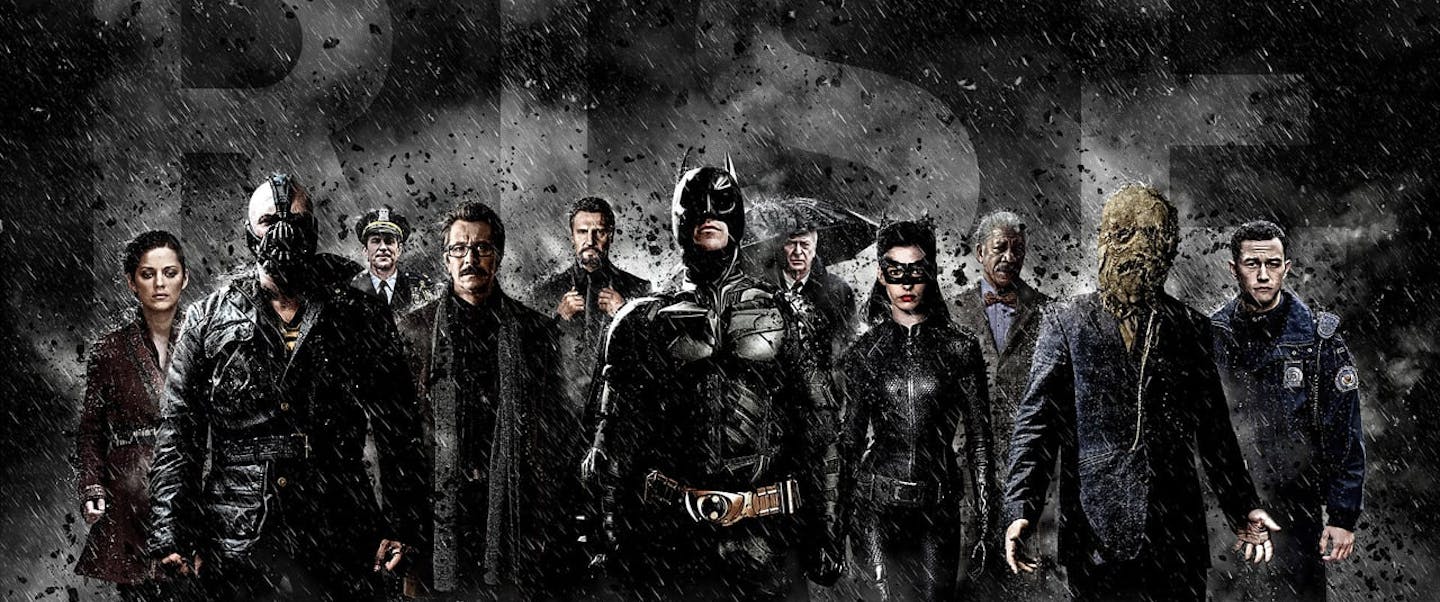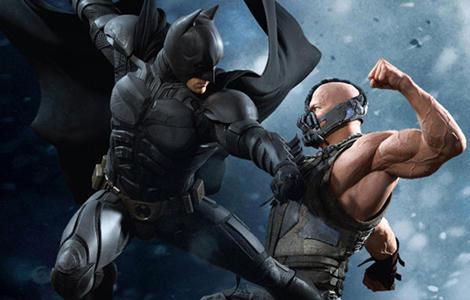When Christopher Nolan’s The Dark Knight Rises arrived in 2012, it faced the near-impossible task of following its predecessor—The Dark Knight (2008), a cultural phenomenon and one of the most critically acclaimed superhero films of all time. Where The Dark Knight was sharp, political, and anarchic, The Dark Knight Rises is mythic, mournful, and monumental. It’s not just the end of a trilogy—it’s the end of an era.
Set eight years after the events of The Dark Knight, the film finds Bruce Wayne (Christian Bale) a broken man. Gotham is peaceful, but only because of a lie: the city believes Harvey Dent died a hero, while Batman vanished, blamed for Dent’s crimes. Bruce has disappeared into isolation, physically battered and emotionally hollow. He walks with a cane and hides in shadows, haunted by guilt and irrelevance.
Enter Bane.
Played with cold menace by Tom Hardy, Bane is a force of nature—a mercenary with terrifying strength, a distorted voice, and a revolutionary philosophy. He doesn’t want money or power—he wants collapse. He seeks to break Gotham the way he aims to break its protector: absolutely, from within.
As Bruce returns to the mantle of Batman, the film begins its grand arc: a fallen hero must rise. But Nolan, always more interested in ideas than capes, turns this into a story about fear, failure, and rebirth. Batman is not a god. He’s a man who must learn, painfully, what it means to fall and still get up again.
Unlike many superhero films, The Dark Knight Rises stretches into the terrain of the epic. With a runtime of nearly three hours and a structure that nods to both war films and revolution narratives, it weaves together themes of identity, sacrifice, and legacy. Hans Zimmer’s thunderous score underscores the film’s operatic tone, with rhythmic chants (“Deshi basara”) echoing the central motif: the climb from the pit of despair to the light of hope

The supporting cast is formidable. Michael Caine’s Alfred delivers one of the trilogy’s most heartbreaking performances, pleading with Bruce not to sacrifice himself for a city that doesn’t even know it needs him. Gary Oldman’s Commissioner Gordon is wearier, but still driven by duty. Joseph Gordon-Levitt’s John Blake, a young officer with ideals and intuition, represents Gotham’s next generation. And Anne Hathaway’s Selina Kyle (Catwoman, though never named as such) adds complexity and moral ambiguity, stealing scenes with elegance, wit, and her own quiet redemption arc.
The film’s central visual metaphor—the prison pit—serves as a powerful symbol. After Bane literally breaks Batman’s back, Bruce is imprisoned in a remote hellhole. There, surrounded by hopeless men, he must heal not just physically, but spiritually. It is only when he rediscovers fear—not of death, but of failing to protect what he loves—that he can make the leap, literally and figuratively, back into the fight.

But The Dark Knight Rises isn’t flawless. Its plot is dense, sometimes messy. Bane’s master plan, once you unravel it, requires a good deal of suspension of disbelief. His voice—filtered through a strange, old-world accent—became an internet joke, though it retains a chilling theatricality. And the film’s politics, often interpreted as a commentary on class warfare and terrorism, are more murky than clear.
Still, the film’s emotional resonance outweighs its logistical flaws. It’s rare to see a superhero film so concerned with legacy and consequence. Bruce Wayne is not immortal. He’s a man trying to close a chapter that has consumed his life. And in doing so, he gives Gotham not just protection—but an ideal. “A hero can be anyone,” Bruce says, “even a man doing something as simple as putting a coat around a young boy’s shoulders.” It’s a callback to a line from Batman Begins, and it lands with crushing emotional weight.
The final act is as grand as anything Nolan has ever staged: an occupied Gotham, a ticking nuclear bomb, a race against time, and the rise of a symbol. The moment where Batman flies the bomb away from the city—seemingly sacrificing himself—is operatic in scale. It brings the trilogy full circle: fear, pain, and selflessness all collide in a single choice.

And yet Nolan, ever the magician, doesn’t leave us in despair. In a final sequence that mirrors the themes of illusion and hope, we see signs that Bruce may have survived. Alfred, sitting in a quiet café in Florence, looks up—and there he is. Whether literal or metaphorical, this moment is Nolan’s final gift: the idea that healing is possible, that legends can rest, and that even the darkest knight can find peace.
The film ends with John Blake discovering the Batcave, setting up the idea of a successor—not a new Batman necessarily, but a continuation of the symbol. In Nolan’s Gotham, Batman is not a man. He’s an idea. And ideas, once planted, are hard to kill.

Ten years later, The Dark Knight Rises stands as a bold, operatic conclusion to what many consider the most ambitious superhero trilogy ever made. It doesn’t match The Dark Knight’s precision or cultural explosiveness, but it wasn’t meant to. This is a film about closure—about endings that hurt, but also heal. It’s a film about what it costs to be a hero, and what it means to move on.
In the age of infinite franchises, where stories are rarely allowed to end, The Dark Knight Rises dared to say goodbye. And in doing so, it gave Batman something rare: a complete story.



